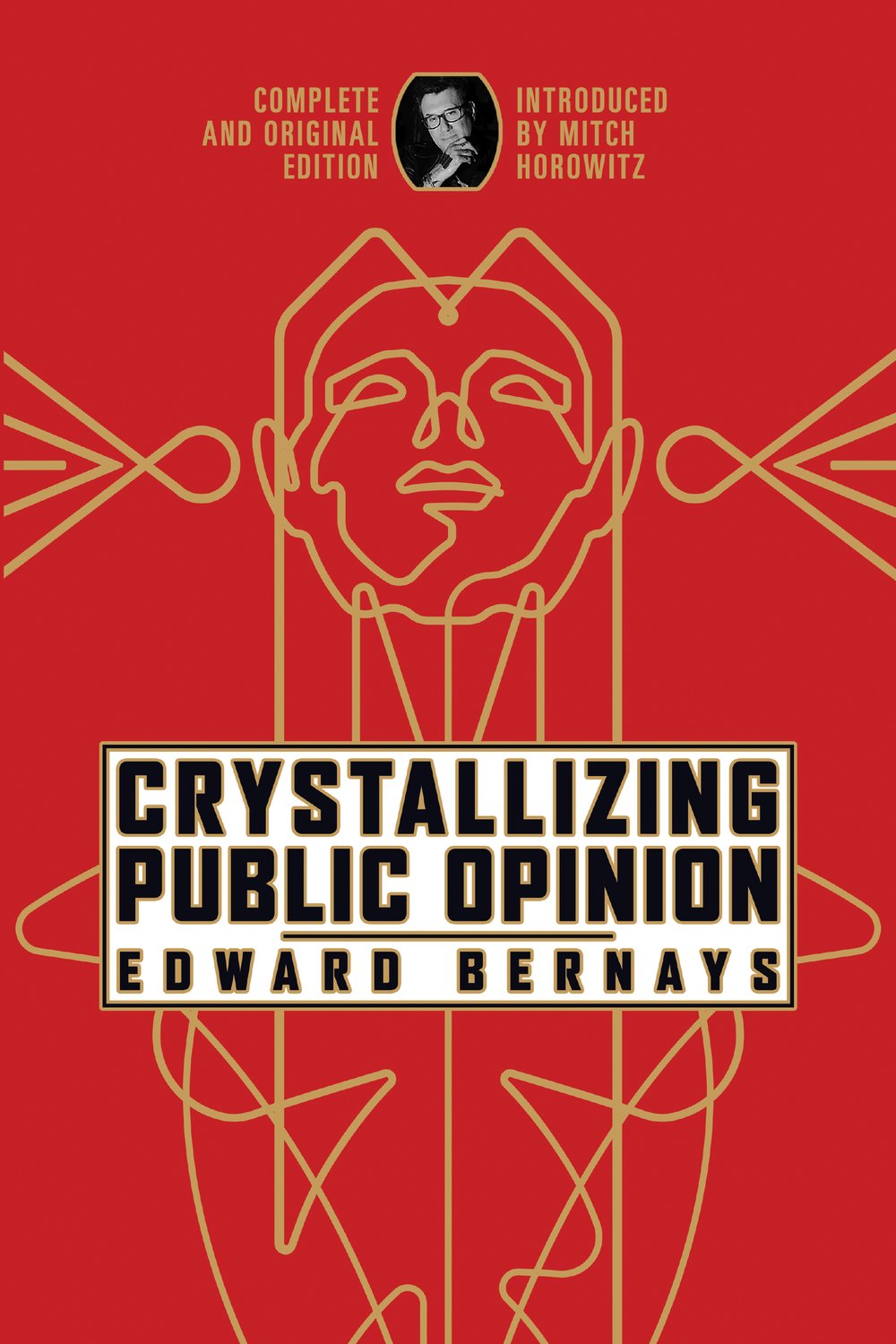Crystallizing Public Opinion
Complete and Original Edition

The Bare-Knuckled Truths of Edward Bernays
You may not know Edward Bernays, but Edward Bernays knows you. His 1923 classic Crystallizing Public Opinion set down the principles that corporations and government have used to influence and manipulate public attitudes over the past century, and the mass media continues that practice today.
This seminal work on how public opinion is created and shaped, offers a glimpse into the world of propaganda and advertising. Bernays, who believes the public behaves like a herd of animals, shows how ideas about what to eat, and how we should look and dress can easily be put into our heads. He outlines how the masses can be controlled in whatever way the influencer chooses.
This original and complete edition includes a new Introduction by PEN Award-winning historian, Mitch Horowitz.
By adapting the ideas that this pioneering PR strategist, who considered himself part of an intellectual and economic elite entitled to govern public opinion and global policy, governments and advertisers have been able to “regiment the mind.” His work explains the popularity of today’s TV news shout-fests and angry social media posts because, as Bernays observed, crowds love a contest. This crowd-contest dynamic fuels the hostile and sarcastic comment chains that populate Twitter, Facebook, and other social media outlets.
We know that beliefs can gain sudden popularity based on the public’s proclivity for seven factors: “flight-fear, repulsion-disgust, curiosity-wonder, pugnacity-anger, self-display-elation, self-abasement-subjection, parental-love-tenderness.”
Named as one of the 100 most influential Americans of the 20th Century by Life magazine, Bernays’ clients included the American Tobacco Company, several U.S. presidents and the opponents of the Guatemalan revolution. This Austrian-born nephew of Sigmund Freud made a study of the different ways to use propaganda. "Crystallizing Public Opinion" was his first major effort to sell himself and his philosophy of public relations.

